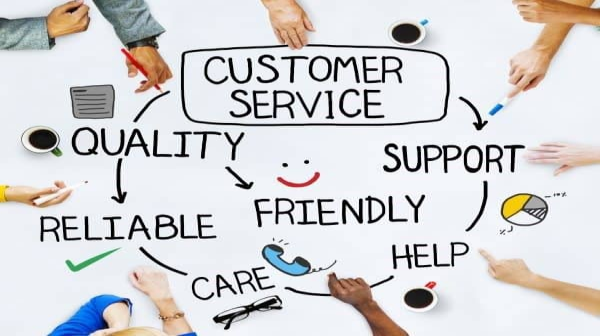Regardless of the size of your company, attracting and then keeping clients is the foundation of any business. Regarding customer acquisition vs. retention, which is worth more time, effort, and resources?
A recurring client who already knows and trusts your brand is more likely to contribute to your company’s long-term success than a new consumer who has yet to demonstrate genuine commitment.
However, no firm can have a healthy pool of existing clients without first obtaining them, similar to the “chicken or the egg” issue!
In truth, it’s all about balancing customer acquisition and retention for your company. So, how important should each of these approaches be to you?

Your answers to all questions can be found below.
Customer loyalty and customer acquisition are both keys to business growth
Which is more critical? is a commonly disputed question in many businesses.
Is it better to focus on customer acquisition (getting new customers) or customer retention (keeping existing customers)?
Companies require both to succeed
When resources are scarce, however, business owners want to know where they should invest their limited funds. The solution ultimately depends on your company’s strategy and long-term objectives.

Customer Acquisition’s Importance
Finding your first customer is the most challenging difficulty you’ll face when starting a new business. It would be best to gain new clients to grow a profitable firm.
This finding is challenging if your company does not yet have a brand name.
Customers may be hesitant to purchase from a company with no previous customers or an excellent reputation.
This issue is genuine for newly founded small enterprises and startups.
Friends and relatives may be the initial consumers of small enterprises and startups.
Once your expanding company has established a solid customer base, you can concentrate on raising brand awareness, making attracting new consumers easier.

Your business model and objectives mainly determine your customer acquisition and sales strategy.
It is a crucial aspect of a company’s growth. Focus on establishing a new client’s faith in your capacity to serve them and ensuring their success with your products and services when you have a new customer. Consumer service is suitable for determining customer happiness. Customer attrition, or the loss of customers, can be reduced by providing excellent customer service.
Customer Retention and Its Importance
Small enterprises and startups, especially those with limited resources, must emphasize the least expensive and fastest-to-implement means of expansion.

Getting existing customers to return and re-enticing lost consumers is generally less costly than acquiring new customers.
According to experts, developing a new customer costs five to 10 times more than keeping an existing one.
Customers who already have a favorable view of your company are more likely to become clients than new customers unfamiliar with your brand.
Selling to a current customer has a probability of sixty to seventy percent while pledging to a new customer has a possibility of only five to twenty percent.

One of the most effective ways to assess the dependability of your company’s service is to look at customer retention.
Customer experience is a critical component in driving customer loyalty and retention for over 89% of businesses.
Businesses with high customer retention rates do well because their customers value the services they provide.
Maintaining constant growth and financial planning requires a high level of customer retention.
Clients who have been with you for a while demand less upkeep than new customers.
Furthermore, increased customer retention can be a great source of new customers through referrals and positive reviews.

Businesses frequently spend too much money on customer acquisition and not enough on customer retention.
Consumers who have been with you for a while are 50% more inclined to explore new products and spend 31% more than new customers.
By increasing client retention by 5%, profitability can grow from 25% to 95%. While businesses neglect client retention, it is critical to a company’s success or failure.

Customer acquisition is important, but customer loyalty works better:
In the starting phase of any phase, customer acquisition is more important than anything, but if your business or brand is established a little bit, customer loyalty works really better due to the following main reasons:

1. High customer acquisition costs
One of your primary objectives is ensuring that you make a profit. Most business owners feel that gaining a new customer will generate the most money. True, more money comes from new customers, but the cost of obtaining a new client is higher than keeping an existing customer.
Research shows that more possibility of selling to a new customer is between 5% and 20%, whereas the likelihood of selling to a current customer is between 60% and 70%.
Why? Because these clients have previously backed you and are familiar with your brand. They’ll trust you more with their business if you can establish a strong bond with them.
As a result, concentrating on your existing customer connections allows you to save money and increase your profit margin.
2. Customer loyalty can bring high profits
According to statistics, repeat customers spend more or bring more profits, and it’s not simply because they keep coming back to your store.

Some reasons are as follows:
Existing customers, regardless of industry, regularly spend more with any business for three reasons:
- Increasing the frequency of visits (loyal customers visit your business more often)
- The average transaction value is higher (they spend more per transaction)
- More excellent long-term value (loyal customers will continuously shop with your brand for an extended period)
These primary factors explain why only 20% of your current consumers will generate 80% of your future income.
3. Customer loyalty enhances brand reputation
People converse. They enjoy telling their friends about their worst and best brand encounters.
When loyal consumers who trust your firm have a positive experience with or service from your company, they will undoubtedly tell their friends, family, and coworkers.

This strategy is up to you on how you convert customers into happy customers and, perhaps, brand ambassadors enhancing your brand reputation.
These brand ambassadors will tell their friends and family about you, give glowing reviews, follow you on social media, and return for more when they require a new product or service.
When you’re just focusing on attracting new consumers, you’re missing out on a huge opportunity to establish a network of brand advocates that can help you grow your business in the long run and enhance your brand reputation.
4. Loyal customers leave good reviews
Positive reviews increase the purchase rate of new customers. Due to the increased rate of online scams, people have trust issues while making a purchase people first check the existing reviews, if your brand has a good number of positive reviews, they will make the purchase without hesitating. So even for acquisition customer loyalty is important.
5. Ways to build customer loyalty
Customer loyalty is crucial for any organization, regardless of its size.
Customers who return spend up to 67 percent more than new customers.
Furthermore, recruiting new clients is up to ten times more expensive than retaining existing customers.
Consider using a handful of these methods if you’re seeking practical ways to build and maintain customer loyalty.

1)Build a royalty program
By increasing the return on your marketing and sales expenditure, a good customer loyalty program can help your company create significant recurring revenue.
Study your customers, like
- In a year, how much does this consumer spend?
- What things do they buy, and how often do they buy them?
- Have they been a customer for a long time?
- Is it possible for us to sell them additional items?
- Do they work with any other vendors, and if so, who are they?
- What percentage of their purchases do we profit from?
You should examine your consumers’ current level of happiness before implementing a loyalty program, using approaches such as surveys, interviews, and tracking customer comments.

Select loyalty-boosting strategies that are linked to a customer’s purchases and the quality of your company connection.
2) Improve customer service
Improving customer service should be at the heart of a company’s mission to deliver outstanding service that makes customers feel valued and respected.
Although offering exceptional service requires additional resources, effort, and money, getting it right will help you stand out from the competition, establish a positive reputation among future consumers, and persuade current customers to buy from you again.

Remember that acquiring a new customer is six times more expensive than keeping an old one!
Customer service is critical because it can assist you in achieving the following goals:
- Boost customer retention
- Increase the amount of money spent by each customer with your company.
- Increase the number of times a customer purchases from you.
- Create positive word-of-mouth for your company.
3) Send discount coupon
Giving extra bonuses to your most loyal clients is one of the best—and arguably cheapest ways to reward customer loyalty.

Depending on what works best for you and your company, this additional benefit might take several forms.
Sending discount coupons is an example of standard incentive programs
Final thoughts:
We have argued that customer retention is considerably more crucial than client acquisition for your company’s long-term success.
A repeat customer’s trust, loyalty, and advocacy are too precious an asset for any firm to overlook in favor of gaining new consumers.
On the other hand, customer acquisition is an integral part of any company’s marketing strategy.
Balance is the key.
Fortunately, the solutions available will handle your customer retention and brand loyalty initiatives for you, allowing your company to focus on acquisition.



